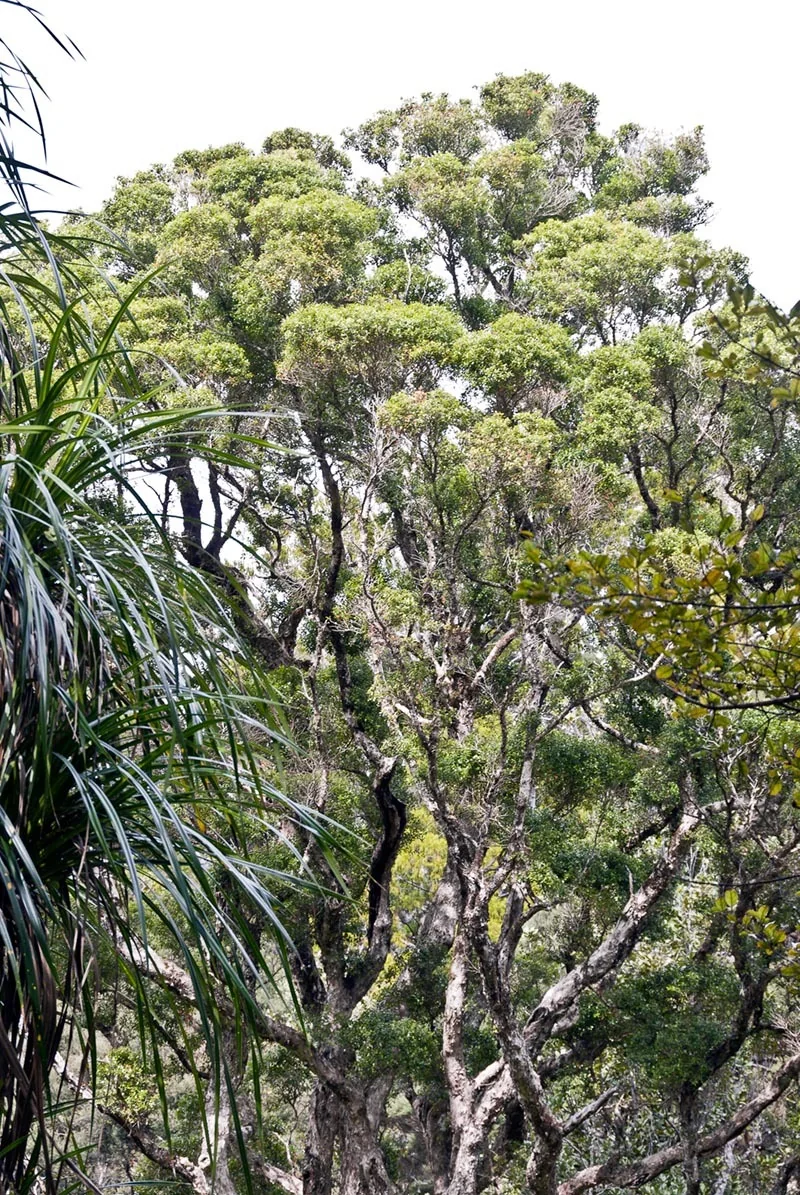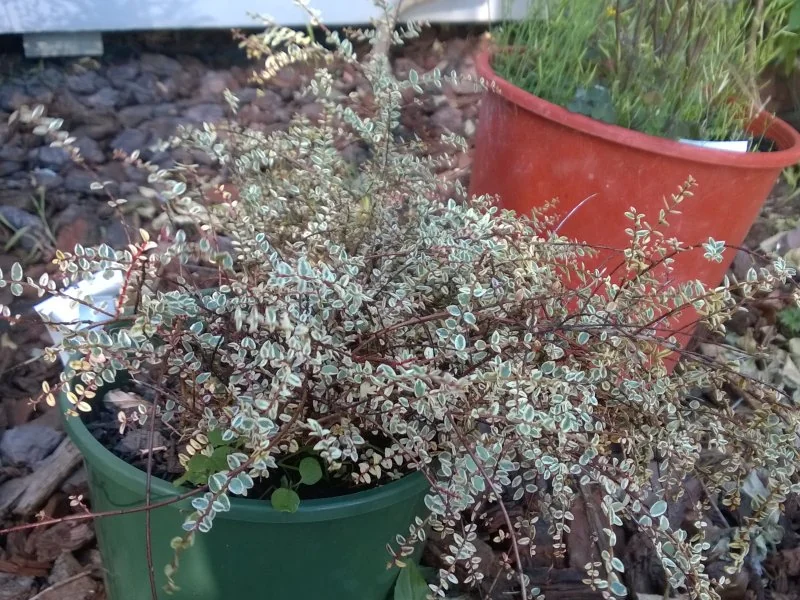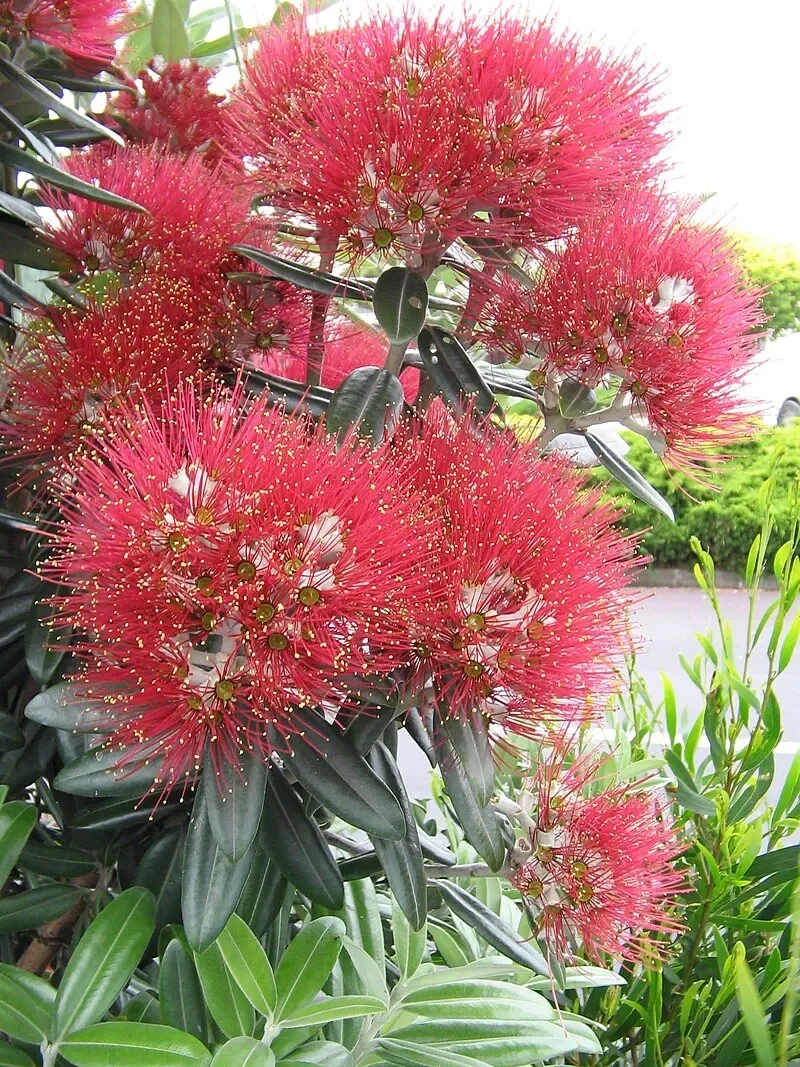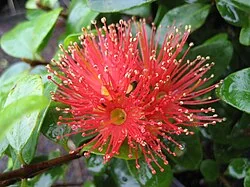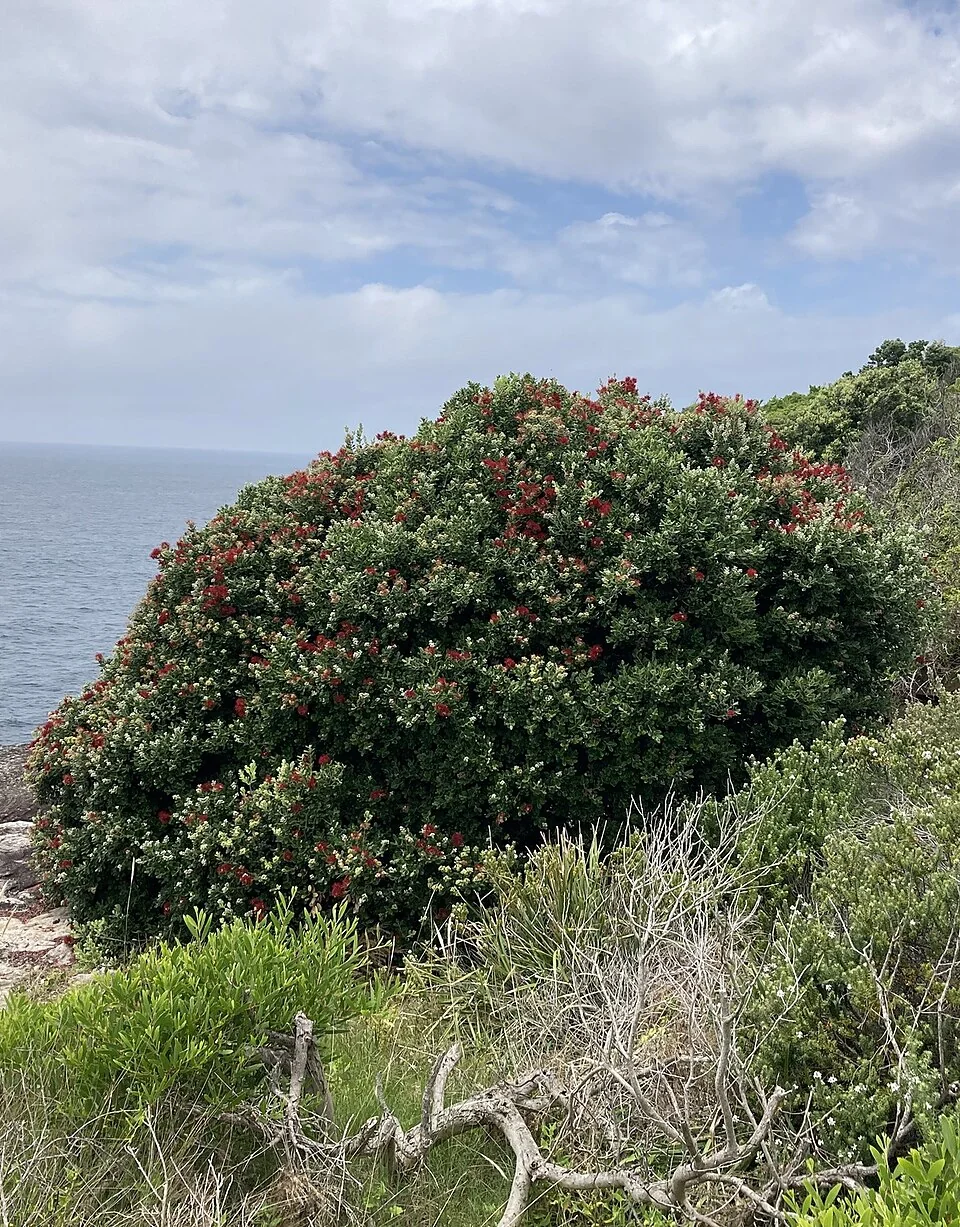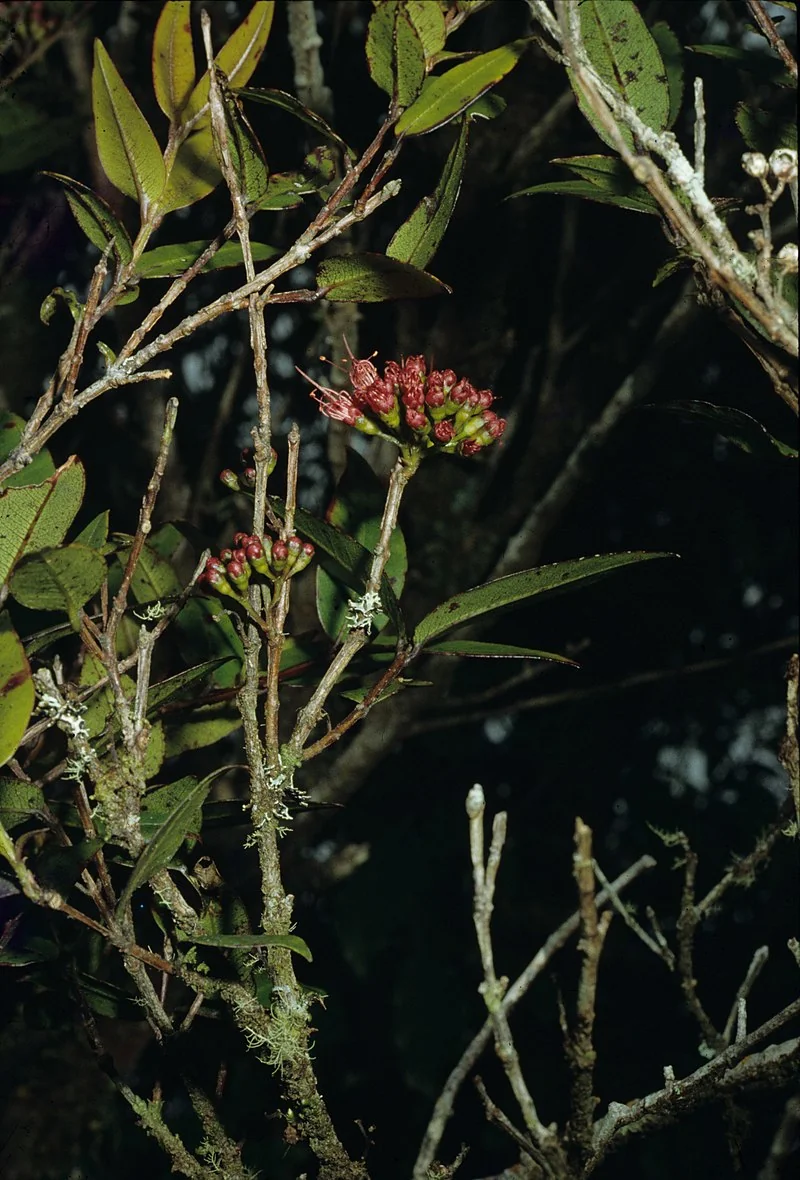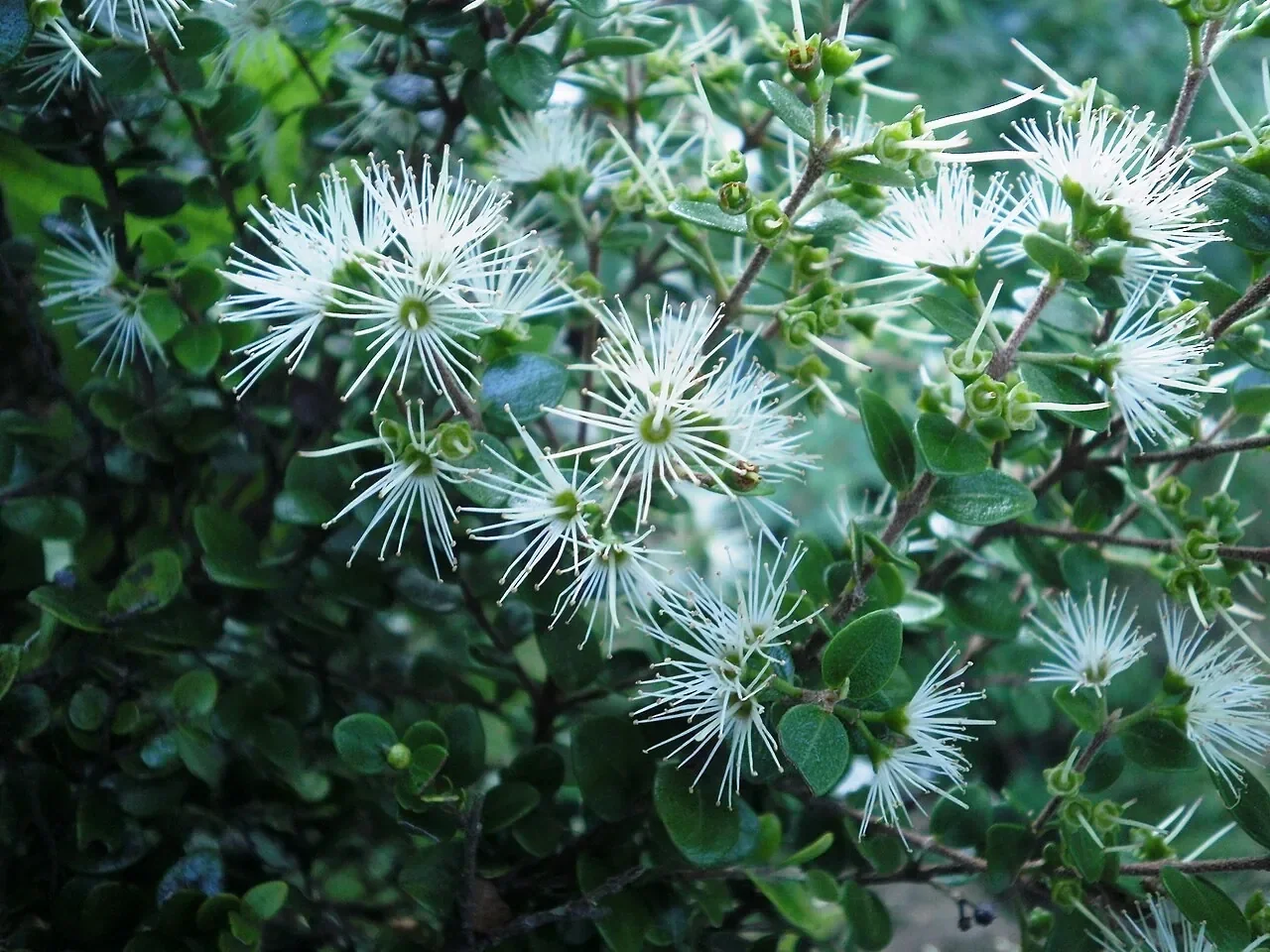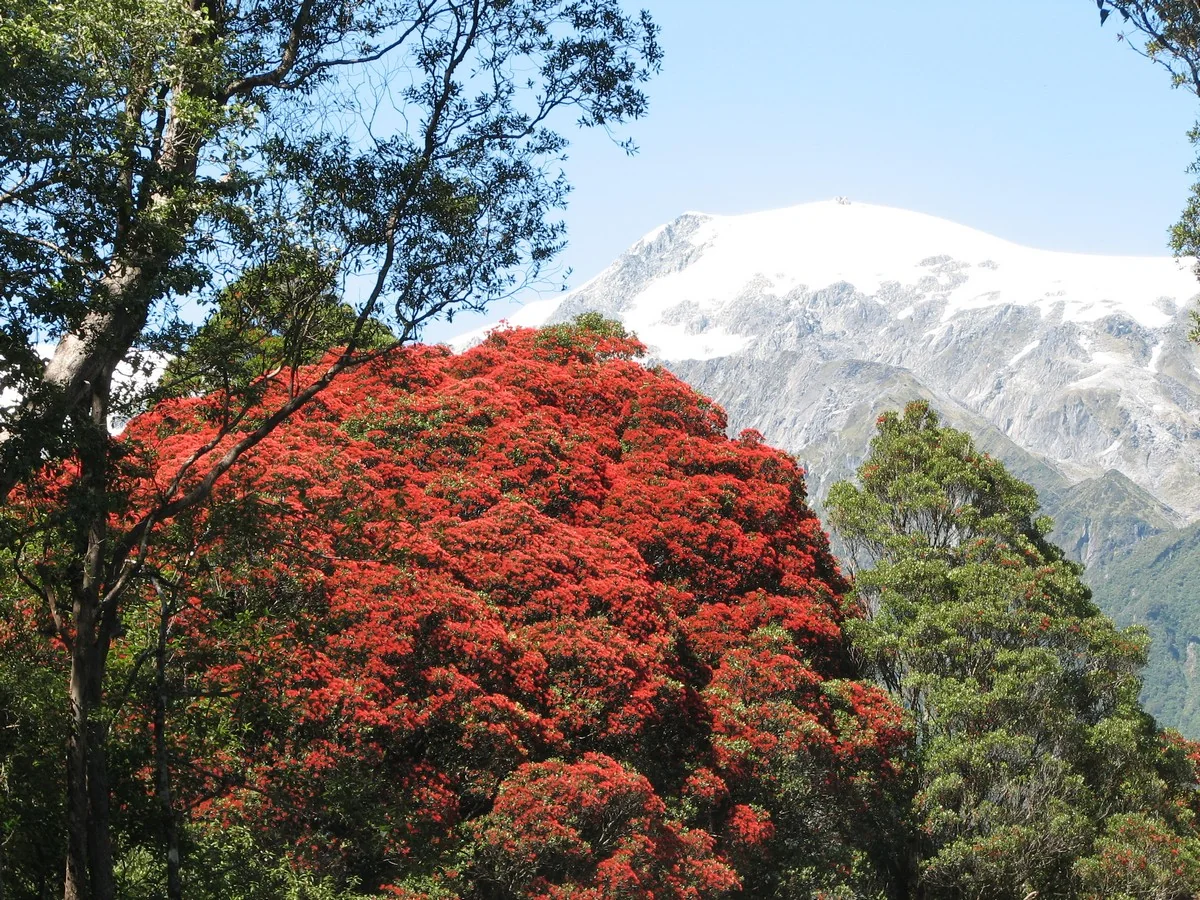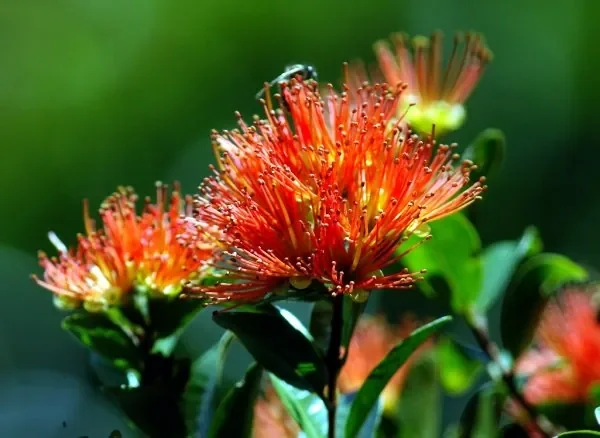
Northern Rātā
Metrosideros robusta
Introduction
About Northern Rātā
Metrosideros robusta , commonly known as Northern Rātā, is one of New Zealand's most spectacular and culturally significant native trees, renowned for its brilliant crimson Christmas flowering displays that illuminate the forest canopy. This magnificent tree has a fascinating life cycle, often beginning as an epiphyte high in the branches of a host tree before sending down massive aerial roots that eventually strangle and replace its host, developing into a forest giant that can reach 30 metres in height. With its distinctive fluted trunk, impressive buttress roots, and leathery oval leaves, Northern Rātā represents the epitome of New Zealand's native forest majesty, though it requires warm, humid conditions and is increasingly threatened by habitat loss and myrtle rust disease. Explore more in the native plants index .

Plant Description
Botanical Features
Northern Rātā ( Metrosideros robusta ) is a tall, evergreen forest tree endemic to New Zealand, growing to heights of 25-40 meters. It often begins its life as a hemiepiphyte, germinating high in the branches of a host tree, eventually forming a massive, often hollow pseudotrunk composed of fused roots. The tree has a stout trunk that can reach 2-3 meters in diameter, with firm, persistent, grey-brown to brown bark that is tessellated, shallowly furrowed, and somewhat corky. Its branchlets are numerous and twiggy, covered in rust-brown hairs when young. The leaves are small, leathery, and dark green, typically measuring 2.5-5 cm long by 1.5-2 cm wide, and are elliptic, ovate-oblong, to rhomboidal in shape, and distinctly notched at the apex. New growth is often pink and covered in fine rust-coloured hairs. The flowers are a prominent feature, appearing in broad, terminal clusters, and are a mass of dark scarlet stamens, though flower colours can also include pink, orange, or yellow. Flowering typically peaks between November and January.
Quick Facts
Overview
| Scientific Name | Metrosideros Robusta |
|---|---|
| Height | 25-30 m |
| Spread | 15-20 m |
| Water Needs | Moderate |
| Light | Full sun to partial shade |
| Frost Tolerance | Moderate |
| Salt Tolerance | Moderate |
| Growth Rate | Slow to moderate |
| Lifespan | Very long-lived |
Climate Best Suited to
Northern rātā favours mild, humid climates with reliable rainfall and shelter. It tolerates light frost when established but resents severe cold and exposure.
Regional Suitability
| City | Climate Suitability |
|---|---|
| Whangārei | Ideal |
| Auckland | Ideal |
| Hamilton | Good |
| Tauranga | Ideal |
| Rotorua | Good |
| Gisborne | Good |
| New Plymouth | Good |
| Napier | Good |
| Whanganui | Good |
| Palmerston North | Moderate |
| Wellington | Moderate |
| Nelson | Moderate |
| Christchurch | Poor |
| Dunedin | Poor |
| Invercargill | Poor |
Natural Habitat
Northern Rātā is a forest giant found in coastal and lowland forests of the North Island and the northern parts of the South Island. It often begins life as an epiphyte high in the branches of a host tree, sending down roots that eventually form a massive trunk. It is a key component of many of New Zealand's native forests, particularly in areas with high rainfall and humidity.
Plant Conservation
Metrosideros robusta , commonly known as northern rātā, is a forest tree endemic to New Zealand. Its conservation status was upgraded to 'Threatened - Nationally Vulnerable' in May 2017 due to the detection of myrtle rust ( Austropuccinia psidii ) in New Zealand. Previously, it was not considered threatened nationally or regionally. The greatest threat to northern rātā is browsing by introduced possums ( Trichosurus vulpecula ), which can severely damage and even kill a mature rātā tree. Hybridisation with pōhutukawa ( Metrosideros excelsa ) is another significant threat, altering the genetic purity of northern rātā stands. Myrtle rust poses a serious threat as indigenous Myrtaceae species were believed to have no resistance to it. Habitat loss and degradation from forest clearance and cutting for firewood also contribute to its decline. A decline in pollinators also threatens the species. Conservation efforts include possum control, Project Crimson initiatives, restoration projects, propagation and planting, discouraging pōhutukawa planting near rātā habitats, monitoring and research, and legal protection of sites.
Growing Requirements
Soil Requirements
Deep, moist, free-draining soils rich in organic matter. Avoid compacted or waterlogged ground. Mulch generously and protect root zones from disturbance.
Light Requirements
Full sun to light shade; more sun encourages heavier flowering.
Water Requirements
Keep evenly moist during establishment. Mature trees withstand short dry periods but benefit from deep watering in drought.
Planting Guide
1. Growing Conditions:
- Sunlight: Northern Rata thrives in full sun, ideally receiving more than 6 hours of direct sunlight daily, but it can also tolerate partial shade.
- Soil: It prefers well-drained, moisture-retentive, and lime-free soil. While it can adapt to most soil types, including poor or rocky ones, very dry sites should be avoided.
- Watering: Water regularly during the plant's establishment phase. Once established, water only during dry periods or approximately every two weeks.
- Hardiness: Metrosideros robusta is hardy to UK zone 9 and is considered frost tender. It can tolerate cold but requires protection from frost when young. It is also highly resistant to maritime exposure.
2. Planting:
- Spacing: Due to its large mature size, allow at least 8-10 meters of spacing between trees when planting in open landscapes or restoration projects.
- Transplanting: The best time to transplant is in autumn or winter, once the plants have reached approximately 50 cm in height.
Ecological Role
Environmental Benefits
Northern rātā ( Metrosideros robusta ) is a long‑lived canopy tree that often begins as a hemiepiphyte in the crowns of hosts before sending roots to the ground and forming massive trunks. Copious summer nectar feeds tūī, bellbirds, kākā, and native insects, while the broadly spreading crown provides habitat and shade that moderates the forest microclimate.
- Hemiepiphytic strategy: Seedlings establish in tree forks, later contributing independent canopy structure.
- Nectar resource: Seasonal pulses of nectar support birds and invertebrates during mid-late summer.
- Keystone canopy: Old trees host epiphytes and lianas; fallen wood recycles nutrients and creates nurse logs.
Uses and Significance
Produces exceptionally profuse nectar during spectacular summer flowering displays that provides vital food resources for tūī, bellbirds, Hīhī, and numerous native insects including beetles and moths. The massive spreading canopies create essential habitat structure in lowland forests, offering nesting sites for native birds while providing shade and moisture retention that supports diverse understory plant communities. As a keystone species, its decline significantly impacts forest ecosystem health and biodiversity.
Cultural and Landscape
An iconic rātā with strong cultural presence. In gardens and parks it serves as a long-lived specimen where climate permits.
Landscaping Ideas
Forest Giant for Large Sites
- Specimen tree: Allow space for its massive trunk and buttresses in parks or large gardens.
- Restoration plantings: Suits coastal to lowland forests; pair with Beilschmiedia , Vitex , and Coprosma .
- Wildlife value: Nectar-rich summer flowers attract birds and insects.
Provide full sun and deep, well-drained soils; consistent moisture helps establish a strong, upright framework.
Seasonal Care Calendar
Spring
Plant, stake, and train young leaders; feed lightly with compost.
Summer
Water in dry spells; avoid pruning during peak flowering.
Autumn
Remove deadwood; reduce irrigation.
Winter
Structural pruning on fine days in frost-free districts only.
Pruning and Maintenance
Techniques and Timing
Minimal pruning beyond basic sanitation is required for this naturally well-formed forest giant. Avoid heavy topping or severe pruning which can compromise the tree's structural integrity and natural form. Maintain a single dominant leader and remove only crossing, damaged, or diseased branches during winter dormancy. Given this species' susceptibility to myrtle rust, ensure all pruning tools are sterilized between cuts and avoid pruning during humid conditions when disease transmission is most likely.
How to Grow Northern Rātā
Northern Rātā is one of New Zealand's most spectacular and culturally significant native trees, renowned for its brilliant crimson Christmas flowering displays. This magnificent tree often begins life as an epiphyte, gradually developing into a forest giant. While it is a robust tree, successful cultivation requires attention to its specific needs, particularly regarding well-drained soil, moderate moisture, and protection from severe frost. Understanding its propagation methods is key to successfully growing this iconic species.
From Seed
Propagating Northern Rātā from seed is a viable method, though it requires fresh, fine seeds and careful attention to conditions. Collect fine seed from mature capsules in late summer to autumn when they begin splitting naturally. Surface-sow without covering on a sterile, fine-textured propagation mix, as seed requires light for successful germination. Maintain consistent moisture and temperatures around 18-22°C, with germination typically occurring within 2-6 weeks under optimal conditions. Seedlings develop slowly and require careful protection from temperature extremes and fungal diseases during establishment. This method is crucial for maintaining genetic diversity and for large-scale restoration projects.
From Cuttings
Semi-hardwood cuttings taken from current season's growth in late summer can root successfully with rooting hormone and consistent mist propagation, though success rates vary significantly between individual trees and genetic lines. Select healthy, non-flowering shoots 10-15cm long, remove lower leaves, and treat with hormone before placing in well-draining propagation mix under high humidity conditions. This method is increasingly important for conservation propagation given the species' threatened status, as it allows for the cloning of desirable genetic material. Patience is required, as rooting can take several months.
From Air Layering
Air layering is an advanced propagation technique that can be used for Northern Rātā, particularly for larger specimens or when cuttings prove difficult. This method involves inducing roots to form on a stem while it is still attached to the parent plant. Select a healthy, semi-woody branch. Remove a ring of bark (about 2-3 cm wide) around the stem. Apply rooting hormone to the exposed cambium layer and wrap the area with moist sphagnum moss, then cover with plastic film to maintain humidity. Once roots have formed (which can take several months), the layered branch can be cut from the parent plant and potted. This method requires careful monitoring and is best suited for experienced propagators.
Pests and Diseases
Myrtle Family Health
- Myrtle rust: Inspect new growth; maintain airflow and avoid pruning during humid flushes.
- Scale/sooty mould: Manage with horticultural oils; wash foliage after treatment.
- Wind damage: Young trees benefit from staking in exposed sites; prune out torn branches promptly.
- Poor drainage: Avoid compacted, waterlogged soils which lead to decline.
Cultural Significance
Metrosideros robusta , commonly known as Northern rātā, holds significant cultural importance, particularly within Māori culture in New Zealand.
Key Aspects of Cultural Significance:
- Symbolism: The Northern rātā symbolizes strength, endurance, and resilience, stemming from its ability to thrive in challenging environments and its robust root systems. It also represents a deep connection to the land and ancestors.
-
Māori Traditional Uses:
- Medicinal: Māori utilized the bark for various medicinal purposes, including treating ringworm, open wounds, bruises, common colds, and dysentery. The leaves were chewed for toothaches, and the nectar was consumed to soothe sore throats.
- Material Culture: The wood was valued for timber, craft, and wood carving. It was used in construction for items like beams in storage houses, logging rails, bridges, shipbuilding, and furniture due to its strength, heaviness, and durability.
- Food Source: The nectar from its flowers was consumed and used to produce honey.
- Spiritual and Folklore: The tree is revered for its beauty, medicinal properties, and spiritual significance. Māori folklore includes a legend where the crimson flowers of the rātā represent the blood of the warrior Tāwhaki. It is also known as "Te rātā whakaruruhau," meaning "rātā, the giver of shelter."
- Modern Relevance: Today, Northern rātā is still used in ceremonies and events that celebrate endurance and resilience. Its vibrant red blooms make it a popular choice for decorations and gift arrangements, symbolizing passion and resolve. It is also valued for firewood and by woodturners.
Bonus Tip
Expert Growing Advice
Northern rātā ( Metrosideros robusta ) often starts life as an epiphyte. In gardens, young plants appreciate a cool root run and consistent moisture; a thick organic mulch and summer dripline mimic the moist forest floor and encourage steady, upright growth.
